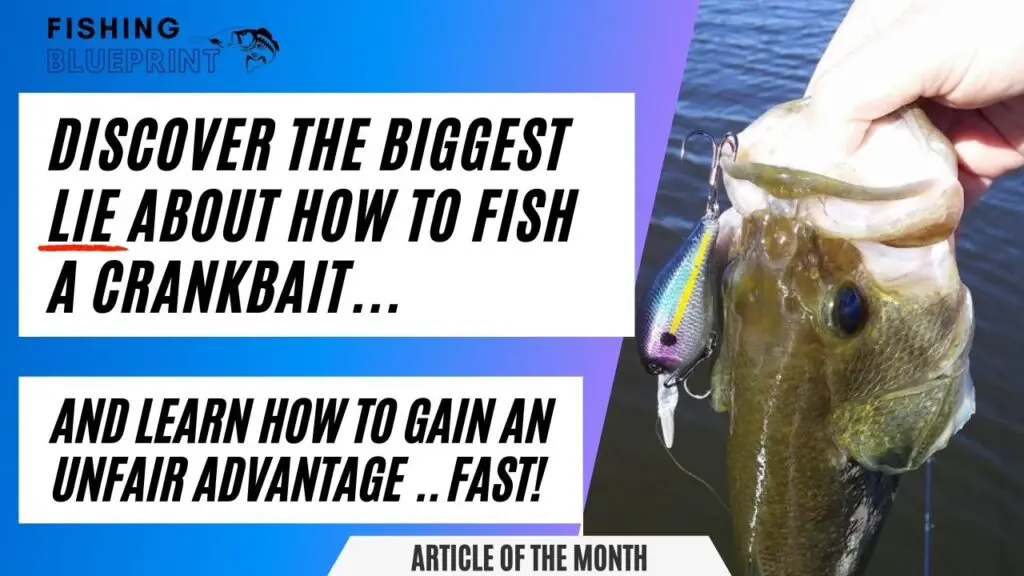How To Fish Lake Oroville
Lake Oroville Fishing Report
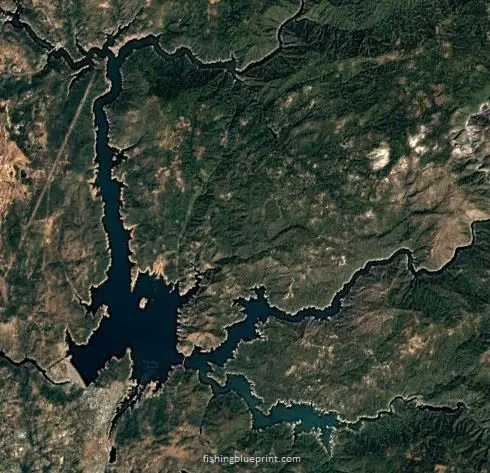
Lake Oroville is a large lake that sits 163 miles away from San Francisco and 463 miles away from Los Angeles.
Overall it’s a quiet lake being nestled in northern California, Un this post you’re going to be given the blueprint to fish this lake.
So what are the best tips for fishing Lake Oroville? There are three important factors you must know if you want to know how to fish Lake Oroville successfully. First, you need to know what kind of fish is in Lake Oroville. Second, it’s important for you to know which part of the lake each species can be found. Lastly, knowing what are the best baits that work on Lake Oroville is vital. However, tactics, baits, and locations will be different for each type of fish that you target. So let’s talk about the steps you need to take in order to give you the best chance of catching a fish on Lake Oroville.
Key Takeaways
This lake gives locals and visitors the opportunity to test their luck in catching one of the many game species this lake has to offer, such as trout, bass, catfish, bluegill, and much, much more!
Here’s the most recent and updated Lake Oroville Fishing Report – it gives you a quick and easy list of some really good fishing spots. If you’re looking for more detail on how to fish each spot scroll down into the article.
- Oroville Dam Area
- Bidwell Canyon Point Intersection
- Middle Fork and South Fork
- Potter Ravine
- Bloomer Ravine
- Dark Canyon
- North Bidwell Cove
- Sycamore & Union Coves
- Craig Saddle Bay
- Stringtown Cove
- McCabe Cove
- Upper End South Fork
Here are some additional fast and helpful tips just for you:
- The easiest way to fish this lake is by boat, but there are areas to fish from the bank, or by kayak or float tube.
- There are public boat ramps to use.
- Camping and RV parking is available.
- You can buy tackle and groceries at the lake or at one of the tackle shops.
About Lake Oroville
Lake Oroville is a deep body of water with the average depth being 300 feet and a maximum depth of 680 feet when the lake is completely full. Lake Oroville is 43 miles long and is an average of ⅓ of a mile across. Lake Oroville has 167 miles of shoreline and spans over 15,805 acres. This reservoir is vital to California. By holding water, providing flood control, recreation, and freshwater releases, Lake Oroville is recognized as a “cornerstone facility” within the California State Water Project, helping to prevent saline intrusion into the Sacramento-San Joaquin Delta and conserving fish and wildlife.
Lake Oroville gives locals and visitors the opportunity to test their luck in catching one of the many game species this lake has to offer.
Important Lake Warnings
Algae blooms may be present which may affect fishing, swimming, and water contact in general.
According to parks.ca.gov, “every one of California’s new laws requires boat operators to have a California Boating Card. The card is required for anyone under the age of 41 to operate a boat in California’s waters.”
If you are fishing and camping, fire bans may be in effect due to the ongoing drought conditions.
Lake Oroville Fishing Tips & General Strategies
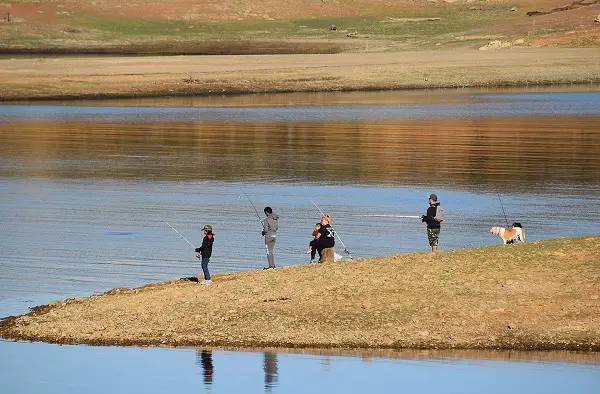
New Hogan Lake – photo: spk.usace.army.mil
It can be a challenge to break down Lake Oroville and decide to get started.
First, the water level can fluctuate greatly so finding productive areas can be frustrating, especially if you don’t fish this lake regularly.

Bass Fishing In Lake Oroville…
Lake Oroville, is one of the premiere spotted bass fisheries in California. After being planted the spotted bass out competed with smallmouth and often competes with forage in areas where largemouth bass will reside.
Luckily there is a wide variety of structures you can fish at Lake Oroville.
To begin, Lake Oroville is known for its thickets of submerged standing vertical timber (often found in water >140-feet water level), and stump/laydown areas where low water levels have degraded any exposed standing timber often found where the lake levels dropped 140-feet or less.
In lower water levels largemouth, spotted bass, and crappie use these trees as cover, which turns into a phenomenal fishing spot.
Another, premiere type of cover Lake Oroville possesses is large boulder reefs. The best boulder reefs are often found in various arms of the lake. Boulder reefs, high spots, and points with large isolated boulders or rock piles provide an ambush point for bass and crappie.
Lastly, one of the most unique types of cover this lake has is its multiple submerged railroad tracks. Railroad tracks can be fishing hotspots especially when the surrounding area is soft sand or clay bottom, when the surrounding area has little other cover in the area, and then the track is less than 30-feet of water.
Railroad tracks can be found on the North and South Fork Arms.
Trout and Salmon Fishing Tips for Oroville…
I’ve found that King salmon and kokanee salmon at Oroville can be excellent.
California stopped planting Rainbow Trout due to a parasite that lived in the warmer sections of the lake, however king salmon and coho salmon can resist this parasite. Brown trout planting was also stopped due to the low catch numbers after planting.
Despite the parasitic threat some rainbow trout will still be caught along with large lake trout and the occasional brown trout.
The primary bait fish is the Japanese Pond Smelt found in Lake Oroville and Almanor Lake. These tend to be more of a shallow bait fish, can create gigantic bait balls, sometimes will school in the size of a basketball court during the summer.
If you want to learn more about catcking King salmon or kokanee salmon, I wrote a comprehensive template at the bottom of this article that walks you through everything you need to know about catching these elusive fish.
Water Clarity
Lake Oroville’s water clarity is as clear as a bell, thanks to its bass-tastic location in the Sierra Nevada foothills.
- Expect visibility between 10-20 feet depending on the season and recent rainfall.
- Keep your eyes peeled, gents! With water this clear, you’ll be able to see those lunker bass coming from a mile away.
The Structure and Cover
- Points: These bass hotspots are abundant in Lake Oroville, making it a prime location for some serious point hopping. Don’t be surprised if you find yourself in a point of no return!
- Rock Walls: Crank up the excitement by fishing along the lake’s rock walls. These structures hold plenty of bass, so go ahead and let your crankbait rock and roll down the wall.
- Islands: I found several islands scattered throughout the lake, providing the perfect opportunity to practice my island hopping skills. Hop on over and catch some bucketmouths!
- Brush Piles: Get ready to brush up on your flipping skills! Lake Oroville’s brush piles are a bass angler’s dream come true. Don’t be afraid to get down and dirty – that’s where the big boys hide!
- Submerged Trees: Looking for a tree-mendous place to catch some bass? Look no further than Lake Oroville’s submerged trees. These underwater forests are the perfect hideouts for trophy bass.
- Floating Vegetation: This lake is home to various types of floating vegetation, providing an excellent habitat for bass. It’s all about frogs n’ hogs. Frogs for topwater and brush hogs and other creature baits for flipping. You might need to weed through some plants, but the payoff will be worth it!
Springtime Fishing update
My most recent trip at Lake Oroville was crazy due to all the new influx of water. , you’ll find quite pleasant weather conditions for a fantastic fishing experience:
Air Temperature: You can expect temperatures to range from the mid-50s to mid-70s (°F), gradually warming as spring progresses. Mornings can be cool, so pack a light jacket, but by afternoon, you’ll likely be basking in the sun.
Wind Speed & Direction: We saw springtime breezes at the lake are typically mild, with wind speeds averaging 5-10 mph. However, occasional gusts may reach up to 15-20 mph. The wind direction can vary but tends to blow from the southwest, so plan your fishing spots accordingly.
Largemouth, Smallmouth, and Spotted Bass Spawn
- Time of Year: Bass spawning in Lake Oroville typically occurs from late February to May, with the peak happening in April.
- Specific Locations: Some of the best areas for bass spawning include the North Fork, Middle Fork, and South Fork of the lake. Also, keep an eye on shallow flats near primary and secondary points, as well as protected coves.
- Water Temperature: Bass start spawning when water temperatures reach 60-65°F.
Trout Spawning
- Time of Year: Rainbow trout in Lake Oroville tend to spawn during March and April. Keep in mind that brown trout have a slightly different spawning schedule, typically from October to November.
- Specific Locations: Trout often spawn in the North Fork, Middle Fork, and South Fork areas. They prefer gravelly and rocky substrates in streams that feed into the lake, such as Cottonwood Creek, Mud Creek, and Dry Creek.
Water Temperature: Trout spawning usually begins when water temperatures are around 45-55°F for rainbow trout and 44-48°F for brown trout.
Lake Oroville – Summer Fishing update
Hello, fellow anglers! An exciting report from James W. who’s a subscriber to our Inner Circle email list.
I’m eager to share the experience recounted by a fellow angler… Their report was really long, so I’m going to paraphrase it… Let’s dive into their report:
Weather
- Air Temperature: It was reported that the angler enjoyed sizzling summer days at Lake Oroville, with temperatures ranging from the high 70s to low 100s (°F). They were well-prepared with sunscreen and a hat to protect themselves from the sun’s rays.
- Wind Speed & Direction: The story mentioned mild winds, averaging 5-10 mph, with occasional gusts up to 15-20 mph. The angler observed that the wind predominantly came from the southwest, and they planned their fishing spots accordingly.
Water Temperature Insights
- The fellow angler recounted that Lake Oroville’s water temperature ranged from the mid-70s to low 80s (°F) during the summer months. They were aware that the water temperature could vary depending on location and depth, so they adjusted their tactics based on where they were fishing.
Forage Findings
- Bass: They were feasting on threadfin shad, pond smelt, and crawfish during the summer fishing adventure. They discovered bass targeting shad and smelt in open water or near structure, while they went after crawfish around rocky areas and cover. They made sure to match their bait and lures to these forage types to increase their chances of landing a lunker.
- Trout: It was observed that trout were snacking on aquatic insects, zooplankton, and smaller fish like pond smelt and juvenile shad. Stocked fingerlings also seemed to be on the menu. To catch these elusive beauties, the angler used lures and bait that mimicked their preferred prey.
Summer bass strategies
Here are some of the best techniques and baits to maximize your success.
Techniques:
- Topwater fishing: Use topwater lures early in the morning and late in the evening when bass are feeding on shad and smelt near the surface.
- Crankbaits: Target bass around structure and cover using deep-diving crankbaits that imitate shad and smelt.
- Jig fishing: Flip jigs near rocky areas and cover to entice bass feeding on crawfish.
Reaction Style Baits:
- Strike King KVD Square Bill Crankbait
- Heddon Super Spook Jr.
- Rapala Skitter V
Finesse Style Baits:
- Yamamoto Senko
- Roboworm Straight Tail Worm
- Zoom Finesse Worm
Top 5 Locations for Bass Fishing at Lake Oroville in Summer:
- Bloomer Cove: This area offers excellent structure and cover for bass.
- Loafer Creek: Cast your line near the submerged vegetation and rocks to find bass hiding out.
- Nelson Bar: Target bass around the rocky points and submerged islands in this area.
- Middle Fork: Explore the various coves and submerged trees for bass hotspots.
- South Fork: Bass can be found around the rocky banks and points in this area.
Sizzling Hot Trout Techniques
Here are some effective techniques and baits for catching trout and Kokanee during the summer at Lake Oroville.
Techniques:
- Trolling: Use downriggers or lead-core lines to reach the deeper, cooler waters where trout and Kokanee reside in summer.
- Drifting: Drift with the wind, using bait or lures at varying depths to locate trout and Kokanee.
- Still-fishing: Anchor near drop-offs, underwater ledges, or structures, and fish with bait or lures at various depths.
Common Baits:
- Mack’s Lure Wedding Ring Spinner
- Luhr-Jensen Needlefish Spoon
- Apex Kokanee Special Lure
- Berkley Gulp! Floating Salmon Eggs
- Blue Fox Classic Vibrax Spinner
Top 3 Locations for Trout and Kokanee Fishing at Lake Oroville:
- Bidwell Canyon: This deep-water area is known for holding schools of trout and Kokanee.
- North Fork: Fish the deeper sections of this area, targeting submerged structures and ledges.
- Canyon Creek: A popular spot for trout and Kokanee, focus on the deeper pools and cooler waters.
Other fishy friends you can catch…
Apart from bass, trout, and Kokanee, Lake Oroville is home to several other game fish species. Here are a few and how you can catch them:
- Catfish: Channel catfish and brown bullheads are found in Lake Oroville. To catch them, fish with nightcrawlers, chicken liver, or cut bait on a sliding sinker rig. Focus on areas near the lake bottom, around submerged structure, or in coves during the evening and nighttime.
- Crappie: These panfish can be caught using small jigs, live minnows, or spinners. Target areas with submerged structure like brush piles, fallen trees, or docks. Early morning and late afternoon are prime times for crappie fishing.
- Bluegill and sunfish: These feisty panfish can be caught using small worms, crickets, or artificial baits like micro jigs or small spinners. Fish around weed beds, docks, or other shallow-water structures where bluegill and sunfish are likely to be found.
But Where Are The Best Places To Fish At Lake Oroville?
And in no particular order here is that list of the best fishing spots at Lake Oroville.
DISCLAIMER: The material provided is for general information purposes only. It’s important to understand that any information provided in this article can change at any time. Any maps or graphics featured are not to be used as navigational aids. Fishing Blueprint will not be responsible for any personal injury or property damage from any misuse of the maps or graphics provided. It’s completely impossible to give you every single spot where you can potentially catch a fish. But, what this list does do is to give you a helping hand and narrow down to the most productive fishing spots.
Oroville Dam Area
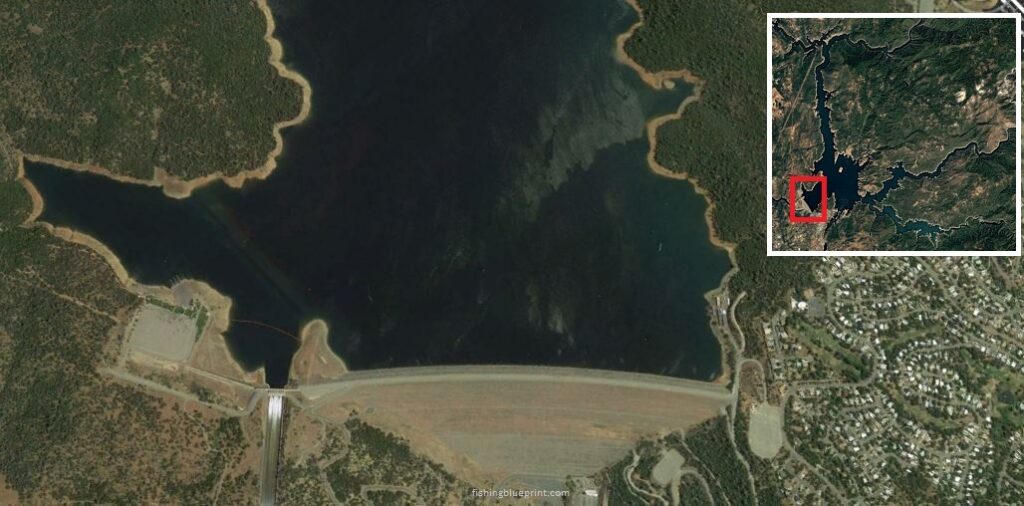
During one of my recent fishing trips to Lake Oroville, I found that fishing just outside the buoy line of Oroville Dam landed me an abundance of coho salmon, lake trout, rainbow trout, kokanee, and even some brown trout.
When the water was low, I graphed the cove just to the north of the dam and found bass and crappie suspended over submerged trees and rocky shelves.
I noticed that this section of the lake could get very windy. Even with the best trolling motor, the wind could quickly blow me off my spot, significantly decreasing my chances of catching a fish.
That’s why I strongly suggest investing in a quality drift sock. For those who may not know, a drift sock is like a parachute for the water. If it’s breezy to windy, you need to slow your drift; otherwise, your lure won’t be in the strike zone long enough to catch a fish. Trust me, it’s a game-changer for windy fishing conditions!
By the way, we found a really good quality drift sock made by Mythik Outdoors, and best of all they’re sold on Amazon.com. Go here to learn more about drift socks and read the reviews from actual customers.
Located: southwest end of lake
Structural features: deep open water, submerged brush and timber on the north cove just outside the dam.
Best species to target: Coho salmon, lake trout, rainbow trout, largemouth bass, spotted bass,crappie
Most effective way to fish this spot: Boat, kayak, float tube
Bidwell Canyon Point to Intersection of Middle Fork and South Fork
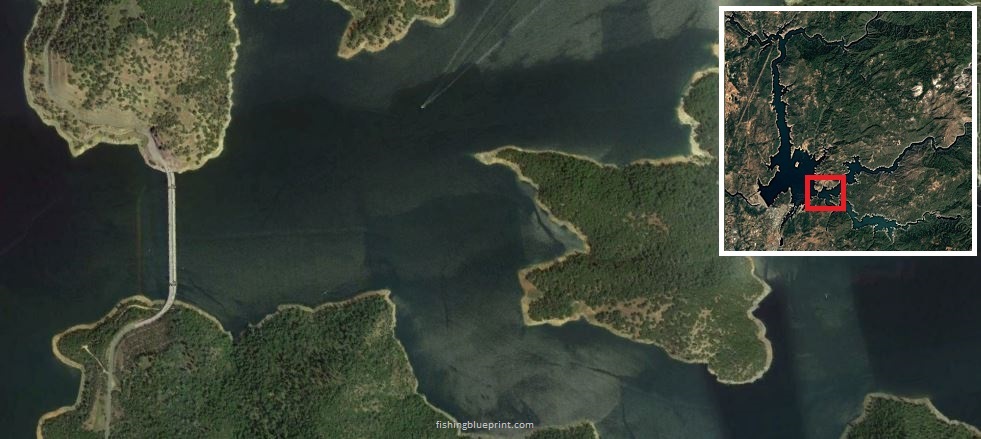
The deep water in front of Bidwell Canyon Point to South Fork/Middle Fork intersection is another great spot to troll for salmon or trout.
This area primarily has submerged river channel ledges and steep dropping points.
In the winter and spring this area can be great and trout will hold between 20-40 feet so you can get away trolling without a downrigger.
However, during the summer these fish will be holding deep in 80-100-feet of water, so trolling with a good downrigger is a must in order to catch them.
Located: middle section of the lake
Structural features: deep water main river channel, natural humps, bars and ridges
Best species to target: Salmon, trout
Most effective way to fish this spot: boat, kayak
Potter Ravine

I ventured up the North Arm and discovered Potter Ravine. In my opinion, Potter Ravine is a sleeper spot that not many anglers consider.
Usually, coves with a bottom composition of mostly soft sand or clay don’t attract a large number of fish. However, this cove also features isolated rock and boulder piles, as well as channel swings, close to the deep water of the main lake. These smaller areas can attract groups of bass to hold over or close to this type of structure.
What’s more, if you can locate some of these piles that intersect with a small ditch (a secondary wash that drains into the cove) and are close to a channel swing, the fishing could be off the charts. Trust me, Potter Ravine is a hidden gem worth exploring
Located: North Arm
Structural features: isolated rock piles, channel swings
Best species to target: Spotted bass, largemouth bass, smallmouth bass
Most effective way to fish this spot: boat
Bloomer Ravine
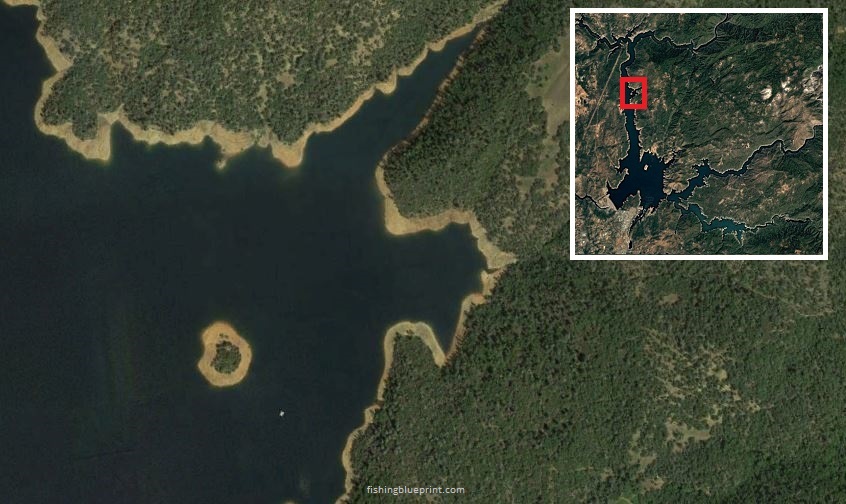
This section can be on fire when the lake level is high and in the spring summer to catch spawning spotted and smallmouth bass.
Located: North Arm
Structural features: isolated rock piles, channel swings
Best species to target: Spotted bass, largemouth bass, smallmouth bass
Most effective way to fish this spot: boat
Dark Canyon
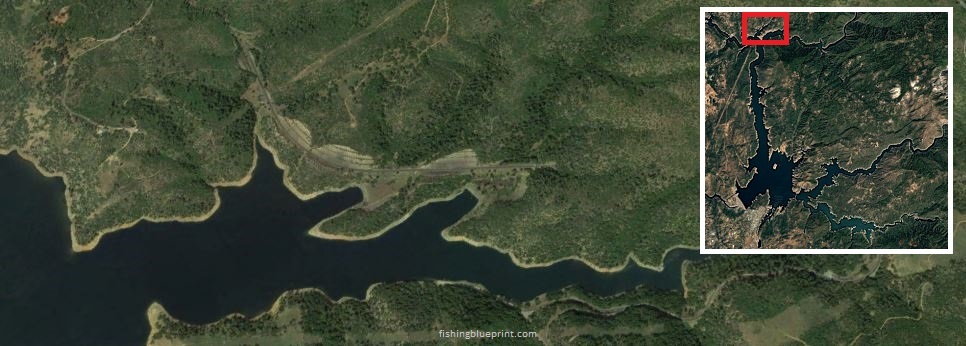
Located on the north section of the North Arm, Dark Canon is a long winding channel that is excellent for spotted bass, smallmouth bass, largemouth bass, crappie and catfish, especially when the water is low.
The channel holds a large amount of submerged brush and a ton of standing timber, along with submerged humps, and sharp channel swings.
Look closely…
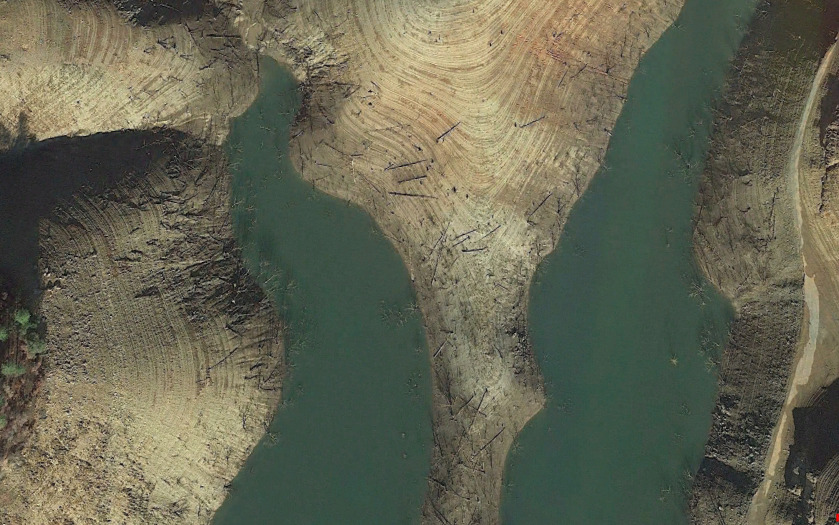
Located: Northwest end of the lake
Structural features: Submerged brush and timber, submerged humps, channel swings
Best species to target: Largemouth bass, smallmouth bass, spotted bass, catfish, bluegill, and crappie
Most effective way to fish this spot: Boat
North Bidwell Cove
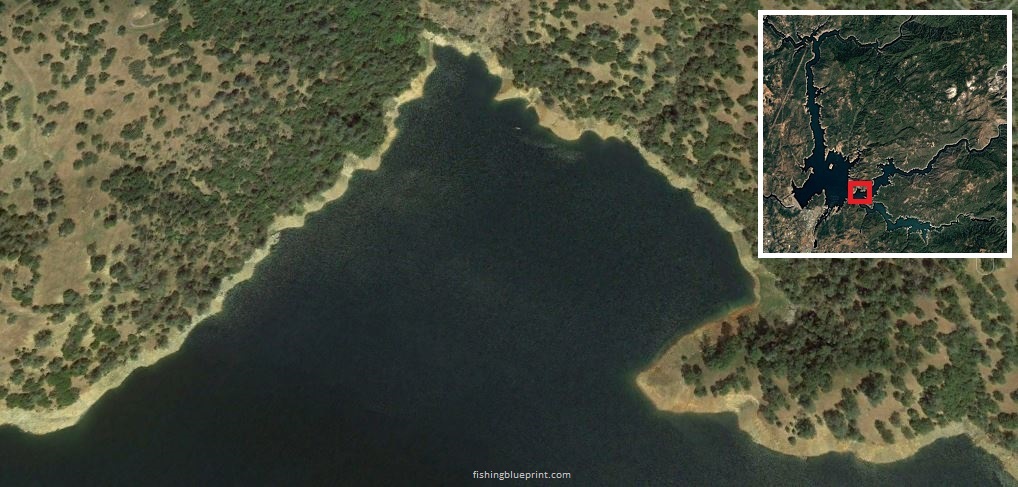
I found that North Bidwell Cove, a moderately-sized bay extending off the main lake, was an exceptionally good location for largemouth and spotted bass.
The secret to fishing this spot was targeting the large drainage ditches, isolated rock piles, and ledges primarily found in the back of the cove.
I also made sure to use my sonar to check for fish holding over the standing timber.
When the water level of the lake was really low, I noticed largemouth bass and crappies holding in the submerged vertical timber thickets, especially on channel swings and points where the old trees had grown around.
I always made it a point to check the main lake points of North Bidwell Cove for bass. Interestingly, the mouth of the creek often had salmon and the occasional trout suspended in the middle of it.
Believe it or not, this cove turned out to be great for spawning bass. It’s definitely a spot I’ll be returning to in the future!
Located: middle section of the lake
Structural features: Wide bay, close to main lake/deep water, several sharp deep secondary creek channel ditches, submerged brush and standing timber, large rock piles.
Best species to target: Largemouth bass, smallmouth bass, spotted bass, catfish, bluegill, and crappie
Most effective way to fish this spot: Boat, kayak, float tube, shoreline
Sycamore & Union Coves

These two coves are a couple of the best coves to target spawning bass.
The lake floor tends to be a bit more rocky ranging from pea-sized gravel, to chunk rock.
A good portion of the coves have a south facing section, which allows the nesting bass to be protected from northern blowing winds and will have a good amount of sun exposure to help keep the eggs warm. And finally, the coves are close to deep water.
Prespawn bass can be targeted by finding the larger boulder piles near the mouth of the cove closest to one of the several ditches and main river channel.
BUT, this cove also has isolated rock/boulder piles and channel swings, next to deep water of the main lake These smaller areas can attract groups of bass to hold over or close to this type of structure.
Additionally, if you can find some of these piles that intersect with a small ditch (a secondary wash that drains into the cove), and close to a channel swing, fishing could be off the charts.
Located: Middle Arm
Structural features: isolated rock piles, channel swings
Best species to target: Spotted bass, largemouth bass, smallmouth bass
Most effective way to fish this spot: boat
Craig Saddle Bay
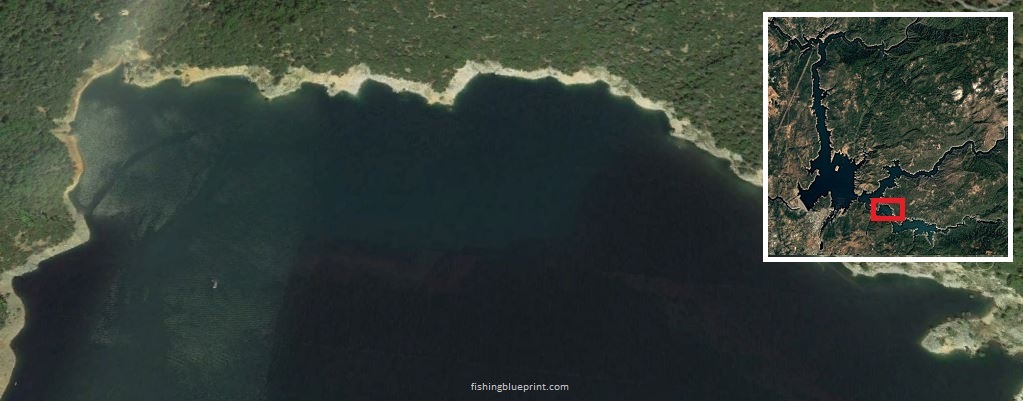
This area can also be great to target spawning bass.
The lake floor tends to be a bit more rocky ranging from pea-sized gravel, to chunk rock.
A good portion of the coves have a south facing section, which allows the nesting bass to be protected from northern blowing winds and will have a good amount of sun exposure to help keep the eggs warm. And finally, the coves are close to deep water.
Prespawn bass can be targeted by finding the larger boulder piles near the mouth of the cove closest to one of the several ditches and main river channel.
BUT, this cove also has isolated rock/boulder piles and channel swings, next to deep water of the main lake These smaller areas can attract groups of bass to hold over or close to this type of structure.
Located: South Arm
Structural features: isolated rock piles, channel swings
Best species to target: Spotted bass, largemouth bass, smallmouth bass
Most effective way to fish this spot: boat
Stringtown Cove
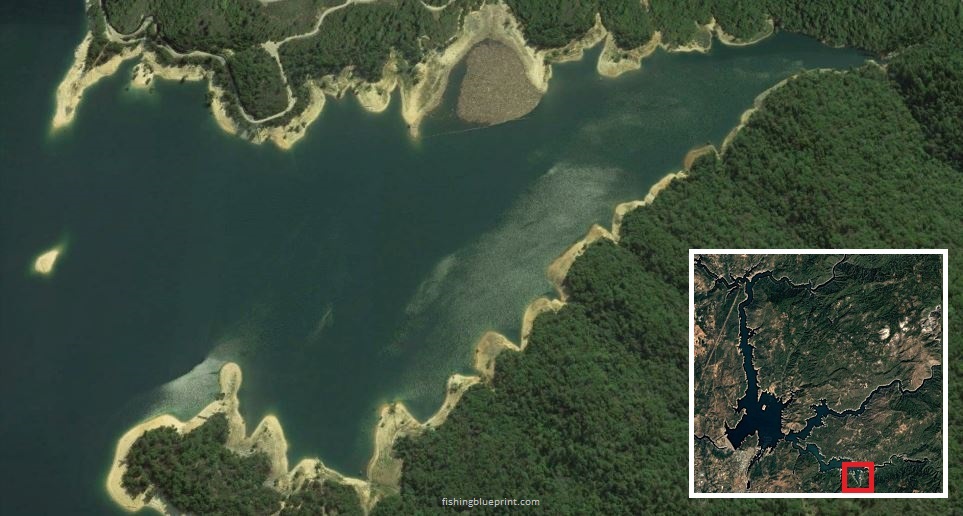
Stringtown Cove is best described as a channel swing cove with isolated patches of chunk rock banks.
The banks can range from moderate to relatively steep and can range from large boulders, to chunk rock, to pea-sized substrate.
This area remains relatively popular for recreational fishing traffic.
Located: South Fork
Structural features: Steep rocky banks, drop offs, humps and ledges
Best species to target: Spotted bass, largemouth bass, smallmouth bass
Most effective way to fish this spot: boat
McCabe Cove

McCabe Cove is the most shallow of all coves in the South Arm. Thereby, it’s also the warmest. Many times you’ll see bass spawning at least a month before the rest of the lake.
A really great feature about this cove is there is one main creek channel that runs down the middle of it, however there are several other ditches (smaller secondary creek channels) that run into main McCabe Cove creek channel. It kinda looks like a leaf.
In the middle of the cove there is a thicket of standing timber, which serves as a great fishing spot for pre-spawn, post-spawn, and fall fishing.
On the outer edges there are scattered rock piles, submerged brush, and laydowns.
With so many options to choose from the best spots to catch bass tend to have some type of structure on it (ie; a rock pile, laydown, brush pile) next to a ditch or the main creek channel.
Located: South Arm
Structural features: shallow cove, thicket of standing timber, scattered rock piles, submerged brush, and laydowns.
Best species to target: Spotted bass, largemouth bass, smallmouth bass
Most effective way to fish this spot: boat, kayak, float tube, shore line fishing
Upper End South Fork
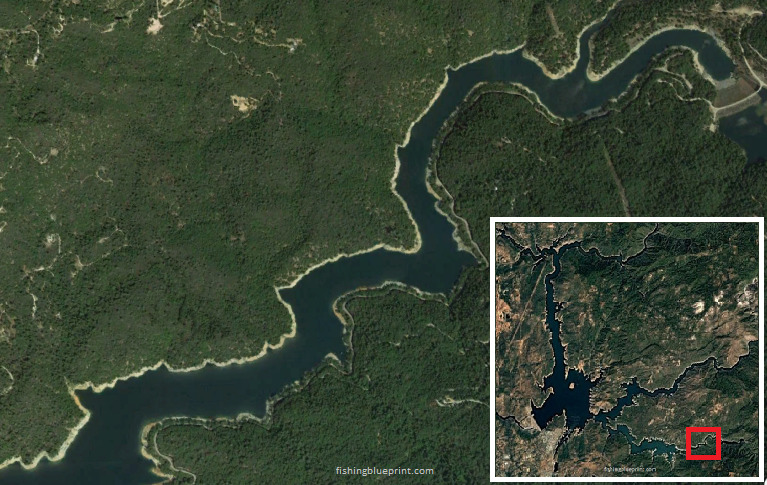
This arm of the lake is fed by the South Fork Feather.
It’s thick with submerged brush and standing timber. Large rock piles also dot this area.
This is a good arm of the lake to fish year round.
There is quite a bit of submerged vegetation and brush piles.
A small thicket of standing timber is located on the inside river bend just east of the Enterprise Bridge.
In the summer look for bass and crappie on main lake points, humps and standing timber. In the fall concentrate your efforts back in the lake arm channel bends to find bass chasing shad.
Look closely…
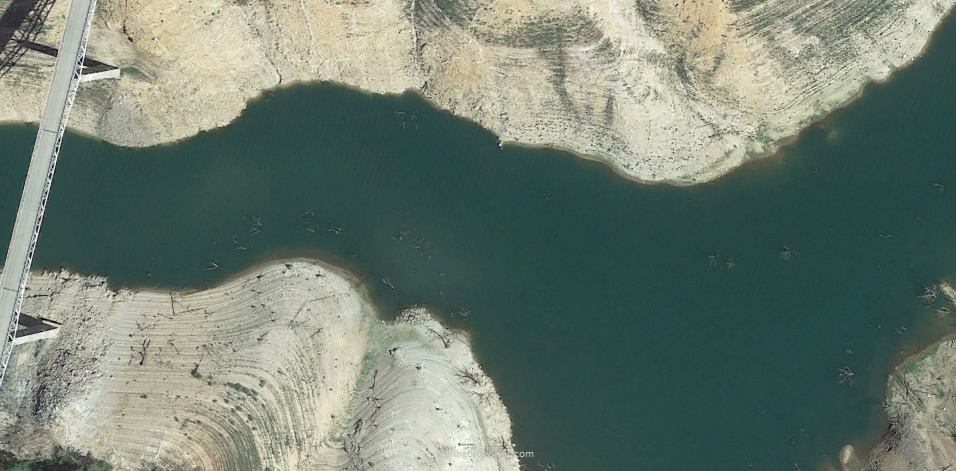
Located: southwest section of the lake
Structural features: Steep walled lake arm with several sharp creek channel bends, submerged brush and standing timber, large rock piles.
Best species to target: Bass, crappie, catfish
Most effective way to fish this spot: Boat, kayak, float tube, shoreline
Boat Ramps at Lake Oroville
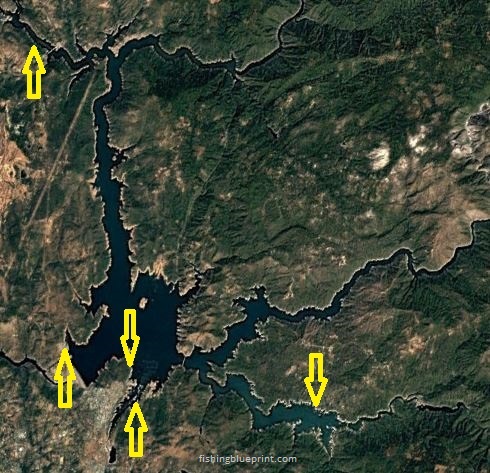
Before heading to Oroville Lake check the Current Launch Ramp Status by clicking here.
Bidwell Canyon Marina & Boat Ramp
Address: 801 Bidwell Canyon Rd, Oroville, CA 95966
Website: bidwellcanyonmarina.com
Phone number: (530) 589-9175
Lanes: 6
Restrooms: Yes
Showers: Yes
Gas: Yes
Camping nearby: Yes
Lime Saddle Marina & Boat Ramp
Address: 3428 Pentz Rd, Paradise, CA 95969
Website: https://www.limesaddlemarina.com/
Phone number: (530) 877-2883
Nearby boat ramp: Yes, 1 lane. *ramp may be inoperable due to low water level call before arriving.
Restrooms: Yes
Showers: Yes
Gas: Yes
Camping nearby: Yes
Loafer Creek Boat Launch
Address: Oroville, CA 95966
Website: none
Phone number: none
Nearby boat ramp: Yes, 4 lanes. *ramp may be inoperable due to low water level call before arriving.
Restrooms: Yes
Showers: No
Gas: No
Camping nearby: Yes
Oroville Dam/Spillway Boat Launch
Address: Oroville, CA 95966
Website: none
Phone number: none
Nearby boat ramp: Yes, 9 lanes. *ramp may be inoperable due to low water level call before arriving.
Restrooms: Yes
Showers: No
Gas: No
Camping nearby: Yes
Enterprise Boat Launch
Address: 071-300-018-000, Oroville, CA 95966
Website: none
Phone number: none
Nearby boat ramp: Yes, 1 lane. *ramp may be inoperable due to low water level call before arriving.
Restrooms: Yes
Showers: No
Gas: No
Camping nearby: Yes
Marinas At Lake Oroville
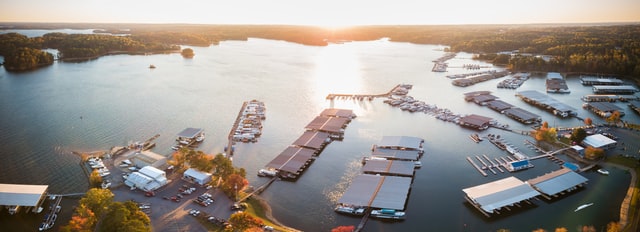
Bidwell Canyon Marina
Address: 801 Bidwell Canyon Rd, Oroville, CA 95966
Website: bidwellcanyonmarina.com
Phone number: (530) 589-9175
Nearby boat ramp: Yes, 6 lanes
Restrooms: Yes
Showers: Yes
Gas: Yes
Groceries/snacks available: Yes
Boat Rentals available: Yes
Camping nearby: Yes
Lime Saddle Marina
Address: 3428 Pentz Rd, Paradise, CA 95969
Website: https://www.limesaddlemarina.com/
Phone number: (530) 877-2883
Nearby boat ramp: Yes, 1 lane. *ramp may be inoperable due to low water level call before arriving.
Restrooms: Yes
Showers: Yes
Gas: Yes
Groceries/snacks available: Yes
Boat Rentals available: Yes
Camping nearby: Yes
Tackle Shops Near Lake Oroville
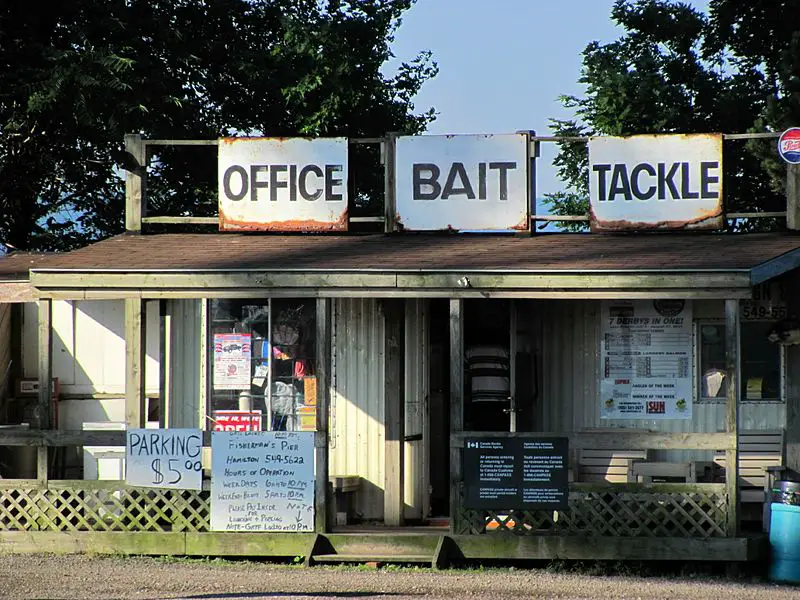
North Valley Tackle And Pro Shop
Oroville, CA 95965
(530) 712-9356
Huntington’s Sportsmans Store
601 Oro Dam Blvd E, Oroville, CA 95965
(530) 534-8000
Big 5 Sporting Goods
1050 Oroville Dam Blvd E, Oroville, CA 95965
(530) 534-1362
Luckys Food and Gas
2301 Oro Dam Blvd E, Oroville, CA 95966
(530) 533-3560
Golden Feather Market
751 Oro Dam Blvd W, Oroville, CA 95965
(530) 533-8564
Walmart Supercenter
465 Cal Oak Rd, Oroville, CA 95965
(530) 534-1082
In Summary...
As you now can see Lake Oroville fishing can be tough at times, but it’s not impossible and with the help of the Lake Oroville Fishing Report… It definitely helps you get started on the right foot quickly and easily, so you can avoid wasting hours wondering where and how to get started.
Did You Get All This?
As fellow fisherman and content creator I thrive on helping others… I feel like I can do the most good by helping others… And frankly… I would feel like I did something wrong if you didn’t walk away feeling a little better about this lake.
I truly want to over deliver for you…
So Let Me Ask You Another Question…
After reading this helpful report:
- Can you see how this could change the way you would fish this lake?… To make it easier, faster… and… with less headache, less frustration?
- If nothing else, do you now have a better sense of where you can get started, even if you have have been here?
- Do you feel that you have a good grasp of what species to expect in this lake?
- Do you have a good understanding what baits are needed to catch each of the different species of fish?
- Earlier we came up with some helpful spots to catch more fish, can you see yourself considering any one of those spots? Which ones are you the most excited about implementing when you get to the lake?
- Is it fair to say that using these spots would give you a significant advantage over someone else who’s fishing this lake?
I Need To Ask A Favor From You And It’s Not Going To Cost You A Single Dime…
If you have gotten anything out of this free report; whether its knowing where to get started, what kinds of fish are in Lake Oroville, what baits to use, where to launch your boat, where to buy a frosty beverage, where to camp, and other things to do when you’re at this lake…
Then I need you to do something that is going to help your fellow angler…
And that is share this report. Please share it to as many people as you can. It’s free to you and it really helps me out as a creator.
Lastly… thank you for spending your time reading through this report and I hope you have a luck on the water.
THIS IS WHERE YOU CAN HELP ME THE MOST: There’s a lot of information about this subject you have found helpful, and I’m sure you’ll be able to put some of the knowledge bombs to use. But sharing this report helps drive traffic which in turn helps me at absolutely no cost to you. I love creating reports like this for you, and you like reading these types of reports please share this with your friends, family, and fellow anglers.
Click on your favorite social media buttons to share this page now!
Other California Related Fishing Articles
- Bass Lake Fishing Report
- Clear Lake Fishing Report
- Castaic Lake Fishing Report
- California Delta Fishing Report
- Diamond Valley Lake Fishing Report
- Don Pedro Reservoir Fishing Report
- Eagle Lake Fishing Report
- El Capitan Reservoir Fishing Report
- Lake Berryessa Fishing Report
- Big Bear Lake Fishing Report
- Folsom Lake Fishing Report
- Irvine Lake Fishing Report
- Lake Almanor Fishing Report
- Lake Camanche Fishing Report
- Lake Isabella Fishing Report
- Lake Havasu Fishing Report
- Lake McClure Fishing Report
- Lake Oroville Fishing Report
- Lake Perris Fishing Report
- Lake Piru Fishing Report
- Lake Skinner Fishing Report
- Lake Tahoe Fishing Report
- Los Banos Reservoir Fishing Report
- New Hogan Lake Fishing Report
- New Melones Lake Fishing Report
- O’Neill Forebay Fishing Report
- Pardee Lake Fishing Report
- Pyramid Lake Fishing Report
- San Luis Reservoir Fishing Report
- San Vicente Reservoir Fishing Report
- Shasta Lake Fishing Report
- Silverwood Lake Fishing Report
- Trinity Lake Fishing Report
- Whiskeytown Lake Fishing Report
More articles just for you...
Funny Fishing Rules, Laws, and Regulations 2025
Crazy Fishing Laws That Will Blow Your Mind! #7 is INSANE! Strange Fishing Regulations and Laws As silly as hook and rod limits may seem,
EXPOSED! How To Use A Spinnerbait The Right Way for 2025
Are You Wondering How To Use A Spinnerbait? Or How To Work A Spinnerbait Over Grass, Logs, or Points? Well, All These Questions Are Answered
EXPOSED! Best Crankbait Colors for 2025 [Which to Buy & Avoid]
What color crankbait to use? Crankbait Color Chart I just love going into a Bass Pro Shops store and just staring at all the walls
Best Underwater Dock Lights For Fishing – 2025 Buyers Guide
Night Dock Light Fishing For Beginners Dear fellow angler, Does this sound like you? You’re someone who loves fishing but just wants to escape the
15 Best Deep Diving Crankbaits [2025 Buyers Guide – Which to Buy & Avoid]
A Complete Buyer’s Blueprint On The Best Deep Diving Crankbaits for Bass, Walleye, or Striped Bass On The Market Today Fishing deep diving crankbaits can

